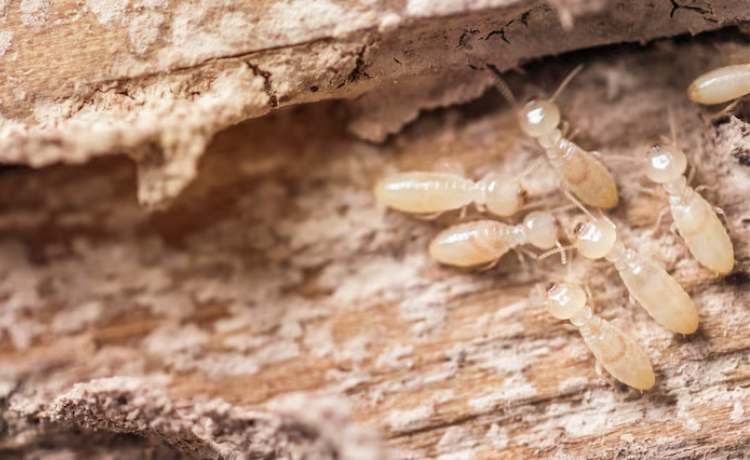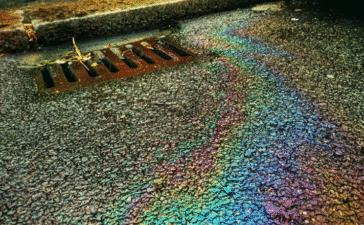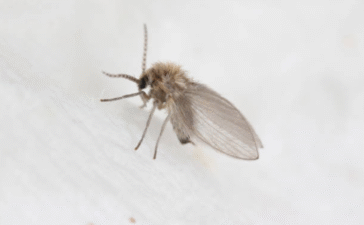Termite infestations remain exceptionally rare across the United Kingdom, yet understanding these destructive insects is crucial for property owners and pest control professionals alike. While the UK’s cooler climate provides natural protection against most termite species, isolated incidents have demonstrated that these wood-destroying insects can establish colonies under specific conditions. The most significant termites UK history occurred in Devon between 1994 and 2021, serving as a valuable case study for understanding termite behavior in British environments. This incident highlighted the importance of early detection, proper identification, and coordinated eradication efforts in managing termite populations.
Modern pest management increasingly emphasizes sustainable approaches to termite control, combining traditional inspection methods with cutting-edge detection technologies. Property owners who understand termite biology, recognize warning signs, and implement preventive measures can effectively protect their investments while supporting environmental conservation efforts.
Termites UK: The Devon Case Study
The Discovery of Termites in Devon
The Devon termite outbreak began in 1994 when subterranean termites were first discovered in properties across North Devon. These termites, identified as Reticulitermes grassei, likely arrived through imported timber or soil materials. The infestation affected multiple residential properties in the Saunton area, causing significant structural damage before detection.
Government agencies coordinated with local authorities and homeowners to implement a comprehensive eradication program spanning nearly three decades. The operation involved systematic property inspections, targeted chemical treatments, and ongoing monitoring protocols. In 2021, officials declared the eradication efforts successful, with no termite activity detected for consecutive monitoring periods.
This collaborative approach demonstrated the effectiveness of integrated pest management strategies combining chemical treatments with habitat modification and community engagement. The Devon case established important precedents for termite management protocols that continue to influence UK pest control standards.
The Impact on Property and Environment
Termite damage in the affected Devon properties included compromised floor joists, damaged skirting boards, and weakened structural timber elements. Property owners faced repair costs ranging from several thousand to tens of thousands of pounds, depending on the extent of infestation and structural compromise.
The environmental impact extended beyond property damage. Termite colonies can alter soil composition and affect native plant communities. However, the controlled eradication program minimized ecological disruption through targeted treatment methods and environmental monitoring protocols.
Successful termite management requires understanding the interconnected nature of property maintenance and environmental stewardship. Modern approaches prioritize minimizing chemical inputs while achieving effective pest control outcomes.
Identifying Termites: Common Misconceptions and Key Signs
How to Identify Termites UK
Distinguishing termites from other wood-damaging insects requires careful observation of physical characteristics and behavioral patterns. Termites possess straight antennae, broad waists, and equal-length wings during swarming periods. These features contrast sharply with flying ants, which display elbowed antennae, narrow waists, and unequal wing lengths.
Key indicators of termite presence include mud tubes constructed along foundation walls or wooden structures. These pencil-thick tunnels protect termites during movement between soil colonies and food sources. Property owners may also notice hollow-sounding timber when tapped, indicating internal damage from termite feeding activity.
Termite swarmers represent another critical identification opportunity. These winged reproductive termites emerge during specific seasonal conditions, typically following warm, humid weather. Swarming events often occur near artificial light sources, making them noticeable during evening hours.
Common Misconceptions About Termites
Many UK property owners mistakenly believe termites cannot survive in British climates, leading to delayed detection and increased damage potential. While termite infestations remain uncommon, microclimate conditions around heated buildings can support colony development.
Another widespread misconception suggests that all wood damage results from woodworm or carpenter ant activity. Professional identification becomes essential when unusual wood damage patterns appear, particularly in properties with moisture management issues or those constructed with imported materials.
Property owners sometimes assume that treating visible termite damage addresses the entire infestation. However, termite colonies extend far beyond visible damage points, requiring comprehensive treatment strategies that target both active infestations and potential colony locations.
Eco-Friendly Pest Control Methods for Termites UK Management
Sustainable Pest Control Solutions
Contemporary termite management emphasizes integrated pest management approaches that reduce environmental impact while maintaining effectiveness. Biological control methods utilize beneficial microorganisms and natural predators to suppress termite populations without synthetic chemical applications.
Borate-based treatments offer low-toxicity alternatives to conventional termiticides. These naturally occurring mineral compounds penetrate wood fibers, creating long-lasting protection against termite feeding. Borate treatments demonstrate particular effectiveness in preventive applications and localized infestations.
Physical barriers represent another sustainable termite control strategy. Steel mesh systems and crushed granite installations create mechanical barriers that prevent termite access to wooden structures. These permanent solutions require minimal maintenance and provide decades of protection without ongoing chemical inputs.
Regulatory Framework and Consumer Preferences
UK pest control regulations increasingly emphasize environmental protection and sustainable practices. The Plant Protection Products Regulation governs termiticide applications, requiring thorough environmental risk assessments before product approval.
Consumer demand for green pest management solutions drives innovation in eco-friendly termite control technologies. Many UK pest control companies now offer certified organic treatment options and integrated management programs that prioritize environmental stewardship alongside effective pest control.
Professional certifications such as the British Pest Control Association membership ensure practitioners maintain current knowledge of sustainable pest management techniques and regulatory compliance requirements.
Termite Detection Techniques and Technologies
Traditional vs. Modern Detection Methods
Traditional termite detection relies primarily on visual inspections conducted by trained professionals. These comprehensive examinations focus on structural vulnerabilities, moisture sources, and evidence of termite activity. Experienced inspectors can identify subtle indicators that untrained observers might overlook.
Advanced detection technologies supplement visual inspections with scientific precision. Acoustic sensors detect termite feeding sounds within wooden structures, allowing non-invasive identification of active infestations. Thermal imaging cameras reveal temperature variations associated with termite colonies and moisture accumulation.
Moisture meters provide critical data for assessing termite risk factors. Elevated moisture levels in wooden structures create favorable conditions for termite establishment and survival. Regular moisture monitoring enables proactive intervention before infestations develop.
Importance of Early Detection
Early termite detection significantly reduces treatment costs and structural damage potential. Properties receiving annual termite inspections experience substantially lower damage costs compared to those with infrequent monitoring protocols.
Prompt intervention preserves structural integrity and property values while minimizing treatment complexity. Early-stage infestations respond more effectively to localized treatments, reducing the need for extensive chemical applications or structural modifications.
Professional detection services provide documentation valuable for insurance claims and property transactions. Comprehensive inspection reports detail findings, recommendations, and treatment protocols that support informed decision-making.
Global Insights: The Spread of Termites Worldwide
Termite Infestations Around the World
Recent scientific discoveries highlight the extraordinary scale of global termite populations. Researchers using satellite imagery identified massive termite mound complexes in Brazil covering areas equivalent to Great Britain’s total landmass. These structures, some over 4,000 years old, demonstrate termites’ remarkable ecological impact and colony longevity.
Climate change influences termite distribution patterns worldwide. Rising temperatures and altered precipitation patterns create new opportunities for termite establishment in previously unsuitable regions. The Mediterranean basin has experienced increased termite activity as warming trends extend favorable habitat conditions northward.
International trade continues to facilitate termite dispersal through imported timber, soil materials, and plant products. Ports and transportation hubs represent high-risk zones for termite introduction, requiring enhanced biosecurity measures and regular monitoring protocols.
Biosecurity and Preventing the Spread of Termites
UK biosecurity measures focus on preventing termite introduction through import regulations and inspection protocols. The Animal and Plant Health Agency oversees plant health controls that include termite risk assessments for imported wood products and soil materials.
Port inspection procedures target high-risk shipments from termite-endemic regions. These protocols include visual examinations, documentation reviews, and quarantine procedures for suspicious materials. Early intervention at entry points prevents establishment and subsequent spread to new territories.
Public awareness campaigns educate importers, landscapers, and property developers about termite risks associated with foreign materials. Training programs help industry professionals recognize termite indicators and implement appropriate reporting procedures when suspicious activity is observed.
Best Practices for Preventing Termites UK
Tips for Homeowners
Moisture management represents the most critical factor in termite prevention. Property owners should address leaking pipes, improve drainage around foundations, and maintain proper ventilation in crawl spaces and basements. Termites require consistent moisture sources for survival, making dry environments highly effective deterrents.
Regular property inspections enable early detection of conditions conducive to termite establishment. Homeowners should examine wooden structures for signs of damage, monitor foundation areas for mud tube construction, and assess landscaping for potential termite attractants such as wood mulch or timber debris.
Proper storage of firewood and building materials prevents termite attractant accumulation near structures. Maintaining clearance between stored wood and building foundations reduces termite access opportunities while facilitating easier inspection and monitoring activities.
Professional Pest Control Services
Licensed pest control professionals provide expertise essential for accurate termite identification and effective treatment planning. These specialists understand termite biology, behavior patterns, and treatment options unavailable to general consumers.
Professional services include comprehensive property assessments that identify current infestations and future risk factors. Detailed inspection reports document findings, provide treatment recommendations, and establish monitoring schedules appropriate for specific property conditions.
Ongoing professional monitoring programs offer long-term protection through regular inspections and preventive treatments. These services typically include annual assessments, documentation updates, and immediate response capabilities for emerging termite activity.
You would also like: “moth treatment for rugs“
Building Long-Term Protection Against Termite Threats
Understanding termite risks empowers UK property owners to make informed decisions about prevention, detection, and treatment strategies. While termite infestations remain uncommon in British environments, the Devon case study demonstrates the importance of vigilance and proper response protocols.
Sustainable pest management approaches offer effective termite control while supporting environmental conservation goals. Property owners who implement integrated management strategies combining moisture control, regular inspections, and professional expertise create robust defenses against potential termite threats.
Continued monitoring and adaptation of termite management practices ensure long-term property protection. As climate patterns shift and global trade continues, maintaining awareness of termite risks and prevention strategies becomes increasingly valuable for responsible property stewardship.
Frequently Asked Questions
Are termites common in the UK?
Termites UK are extremely rare in the UK due to the cooler, less humid climate that is unsuitable for most termite species. The only documented case of established termite colonies occurred in Devon from 1994 to 2021, which was successfully eradicated through coordinated government and community efforts. The UK’s natural climate barriers make termite establishment highly unlikely in most regions.
How can I detect termites in my home?
Key signs of termite presence include mud tubes along foundations or walls, hollow-sounding wood when tapped, discarded wings near windows or doors, and small piles of wood-colored droppings. Professional inspections using moisture meters, acoustic sensors, and thermal imaging provide the most reliable detection methods. Annual property inspections help identify conditions that might attract termites before infestations develop.
What are eco-friendly methods to prevent termites?
Sustainable termite prevention focuses on moisture control, physical barriers, and natural deterrents. Maintaining proper drainage, fixing leaks promptly, and ensuring adequate ventilation create unfavorable conditions for termites. Borate treatments offer low-toxicity wood protection, while steel mesh barriers provide permanent physical protection. Regular cleaning and removal of wood debris near structures eliminate potential attractants.
Can termites cause serious damage to my property?
Termites can cause significant structural damage by consuming wooden support elements, flooring, and other cellulose-containing materials. In the Devon outbreak, affected properties required extensive repairs including floor joist replacement and structural reinforcement. However, damage typically develops over extended periods, allowing time for detection and intervention when regular monitoring protocols are maintained.
How can I prevent termites from invading my property?
Prevention strategies include maintaining dry conditions around foundations, storing firewood away from structures, removing wood debris from landscapes, and conducting annual property inspections. Installing proper drainage systems, sealing foundation cracks, and maintaining ventilation in crawl spaces create unfavorable termite conditions. Professional assessments help identify property-specific risk factors and appropriate prevention measures.












